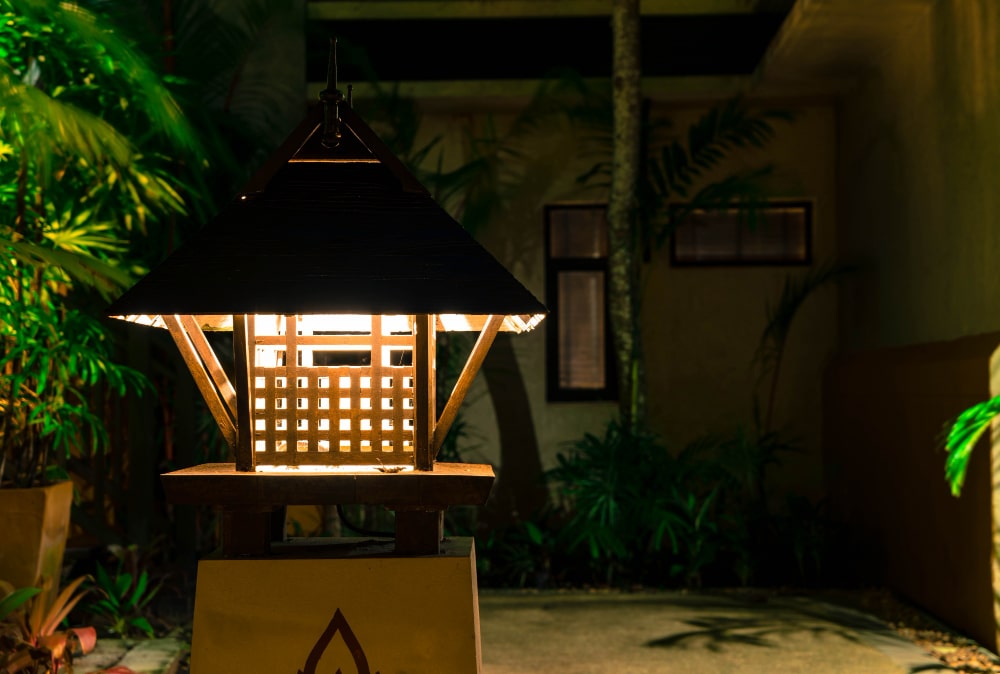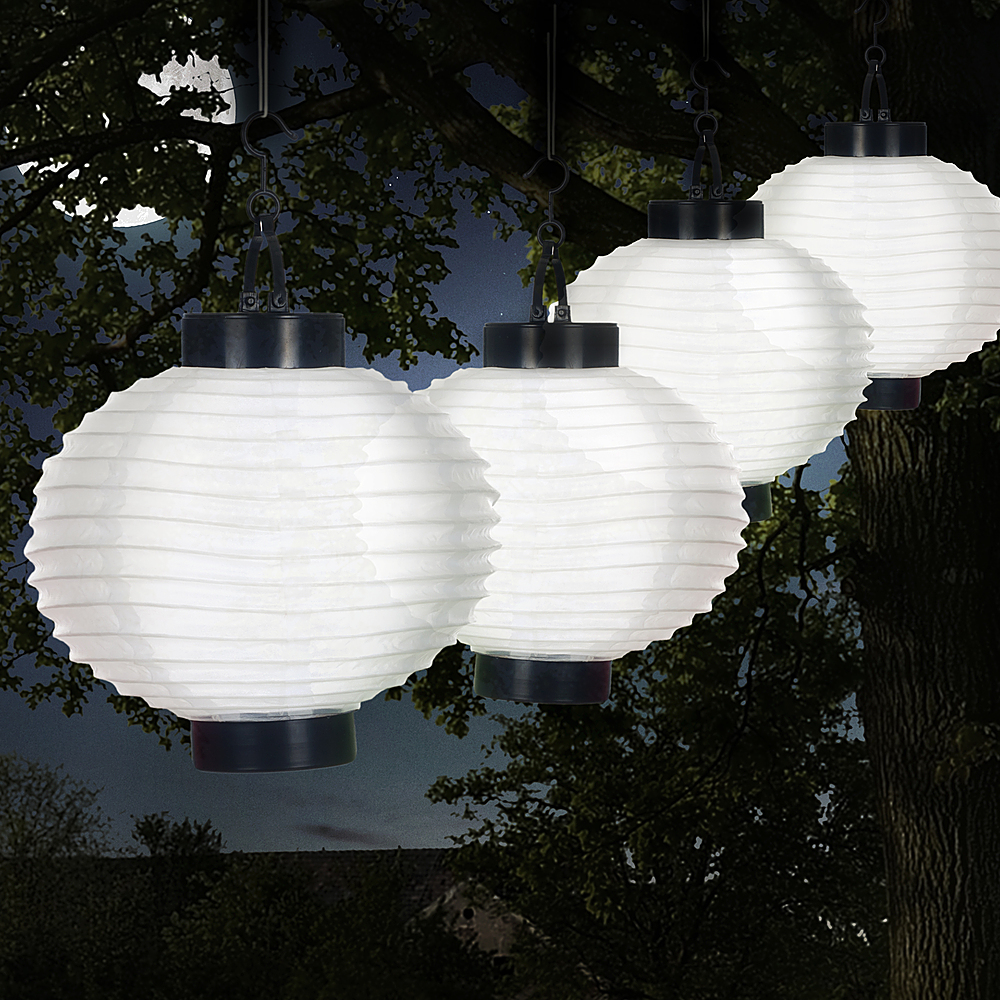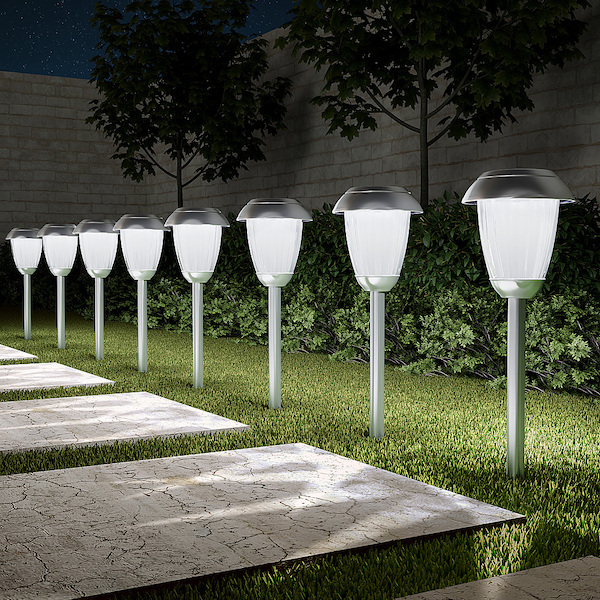Table of Contents
ToggleWe find ourselves amidst an era where the sun’s power is revolutionising the world around us.
From simple households to vast industries, the adoption of solar energy is reshaping our approach to power consumption.
As we witness the rise of this sustainable energy source, not just the interiors of our homes benefit; outdoor spaces, particularly yards and gardens, are also transforming.
Solar yard lights epitomise this shift, embodying the marriage of innovation and environmental stewardship. These fixtures, adorned with solar panels and LED bulbs, symbolise the dawn of a new age in outdoor illumination.
With a plethora of options available, from string lights to flood lights, navigating the landscape of solar lighting requires a keen eye and a discerning approach.
In this exploration, we delve into the nuances of selecting the perfect lights for your yard, considering factors such as lighting type, brightness, durability, and budget.
Join us as we illuminate not just your outdoor spaces but also your path towards sustainable living in this solar-powered revolution.
What are solar yard lights?
Solar yard lights are modern outdoor lights powered by sunlight.
These are made of photovoltaic (PV) panels strategically positioned to catch sunlight and convert it into electrical energy.
Made from silicon-based materials, these panels are amazing at generating electricity when the sun shines on them, making sustainable lighting possible.


How do solar yard lights work?
Solar yard lights operate by harnessing the sun’s energy to illuminate outdoor spaces. They use a simple yet effective mechanism that involves several key components working together seamlessly.
The panels are typically made of silicon-based materials and possess the remarkable ability to transform sun’s radiation into electrical energy through a process called the photovoltaic effect.
Once the PV panels capture sunlight, they generate direct current (DC) electricity. This electricity is then passed through a device known as a charge controller, which helps to regulate the voltage and current to prevent the batteries from overcharging.
Accompanying the PV panels are rechargeable batteries, which store the electrical power generated during the day for use at night. These batteries, often lithium-ion or nickel-metal hydride (NiMH), are chosen for their durability and ability to withstand repeated charging and discharging cycles.
As daylight fades and ambient light levels decrease, light sensors embedded in these yard lights detect the change in lighting conditions. When the sensors detect low light levels, they trigger the activation of the LED (Light Emitting Diode) bulbs.
LED bulbs are the preferred choice for solar lights for the yard due to their energy efficiency, long lifespan, and brightness. When powered by the stored energy in the batteries, these bulbs emit a focused light that effectively illuminates outdoor spaces while conserving energy.
The combination of photovoltaic panels, rechargeable batteries, LED bulbs, and intelligent light sensors allows them to operate autonomously, providing reliable illumination for outdoor areas without the need for external power sources or human intervention.
Do solar garden lights need direct sunlight?
Yes, they generally require direct sunlight to operate optimally, but the extent of the sun needed can vary based on several factors.
Solar garden lights should be placed in areas where they can receive direct sunlight for a significant portion of the day. Direct sunlight ensures that the photovoltaic (PV) panels, which capture the sun’s energy, are exposed to maximum sunlight, allowing them to generate sufficient electricity to power the lights.
However, solar garden lights can still function in partially shaded or indirect sunlight conditions, albeit with reduced efficiency. In such cases, the PV panels may receive less intensity of sunlight, leading to a slower rate of energy generation and potentially shorter illumination periods.
It’s essential to consider the placement carefully. Placing them in shaded areas or under dense foliage may significantly impact their performance. Conversely, positioning them in open areas with ample sunlight exposure will maximise their efficiency and ensure consistent illumination.
Additionally, the quality of the solar garden lights and their components can influence their ability to function in varying light conditions. High-quality lights may feature advanced PV panels, efficient batteries, and intelligent light sensors that enable them to adapt to changing light levels more effectively.


Types of outdoor solar lights for the yard
- Solar string lights: These are decorative lights that come in strings and are often used to adorn trees, fences, or outdoor spaces for special occasions or ambience.
- Solar deck lights: These lights are specifically designed for decks or patios and installed on the surface of the deck to provide subtle illumination and enhance safety.
- Solar spotlights: These lights highlight specific features in the yard, such as landscaping elements, statues, or architectural details.
- Solar post lights: These lights are commonly used to illuminate pathways, driveways, or yard entrances.
- Solar flood lights: Best known for offering bright and wide-ranging illumination, these are ideal for lighting up large areas such as driveways, gardens, or outdoor recreational spaces.
- ç: These are commonly attached to fences or walls. They provide a soft glow along the perimeter of the yard for added security and visibility.
- Solar lanterns: These traditional-style lights add charm and character to outdoor spaces while providing functional lighting for pathways, gardens, or patio areas.


SONY DSC - Solar wall lights: These are usually mounted on walls or fences. They offer directional illumination and are often used to brighten up dark corners or provide security lighting.
- Solar driveway lights: These lights are designed to line driveways, guiding vehicles safely and enhancing the aesthetic appeal of the entrance.
- Solar walkway lights: These lights illuminate pathways for safe navigation and add a decorative touch to the landscape.
- Solar porch lights: These can be installed near entrances or on porch ceilings. They welcome guests and provide illumination for outdoor seating areas or entryways.
- Solar step lights: Often mounted on steps or staircases, these lights enhance safety by illuminating stair treads and preventing tripping hazards in low-light conditions.
- Solar lawn lights: These lights are designed to be staked directly into the ground, providing ambient lighting for lawns, flowerbeds, or garden borders.


How many solar panels are needed for yard lights?
Determining the number of panels needed for yard lights depends on several factors, including the specific type of lights, their intended usage, and the amount of sunlight available in the area.
Generally, most solar yard lights come with integrated panels that are designed to provide enough energy to power the built-in LED bulbs. These panels are typically small and compact, as they need to fit within the design of the light fixture while still capturing sufficient sunlight to generate electricity.
For individual yard lights, a single solar panel is usually adequate to power the light throughout the night, provided that it receives enough sunlight during the day to recharge the batteries fully. However, for larger or more energy-intensive lights, such as flood lights or spotlights, multiple solar panels may be required to meet the large energy demands.
The number of solar panels needed also depends on the geographical location and the amount of sunlight received. In areas with abundant sunlight, fewer panels may be required to generate enough energy.
In contrast, in regions with less sunlight, more panels may be necessary to compensate for lower irradiance.
How to choose solar lights for the garden – Features to consider
Choosing the right lighting for your garden involves considering several key features to ensure optimal performance and suitability for your outdoor space. Here are some important factors to keep in mind:
- Lighting type: Determine the specific purpose of the lights in your garden, whether it’s decorative accent lighting, pathway illumination, or security lighting.
- Brightness: It is important to consider the brightness level of the LED bulbs, measured in lumens, to ensure adequate illumination for your intended use.
- Panel quality: Look for high-quality panels made from durable materials that can efficiently capture sunlight and convert it into electricity.
- Battery life: Opt for lights with long-lasting rechargeable batteries, such as lithium-ion or nickel-metal hydride (NiMH), to ensure reliable performance and extended illumination periods.
- Durability: Choose solar lights constructed from weather-resistant materials, such as stainless steel or durable plastic, in order to withstand outdoor conditions and ensure longevity.
- Motion sensors: For security or pathway lighting, consider lights with motion sensors that activate the LEDs when motion is detected, providing added safety and energy efficiency.
- Ease of installation and maintenance: Select lights that require less maintenance and are quite easy to install, such as stake-mounted or wall-mounted designs with simple assembly instructions.
- Aesthetics: Consider the design features and style of the lights to ensure they complement your garden’s aesthetic and enhance its overall appearance.
- Budget: Determine your budget and choose lights that offer the best combination of design and quality within your price range.
Bottom Line
Soon, the world will be witnessing a revolution in solar technology as more and more households and outdoor spaces embrace the benefits of sun-powered lighting solutions.
With advancements in panel efficiency, battery technology, and LED lighting, solar lights for gardens are becoming increasingly popular for their eco-friendly operation and cost-effective illumination.
By harnessing the power of the sun, these lights offer a sustainable alternative to traditional lighting options, reducing energy costs and environmental impact.
With a wide array of options available to meet various needs and preferences, embracing solar lighting is not just a practical choice but also a leap towards a brighter, greener future for our gardens and outdoor spaces.




